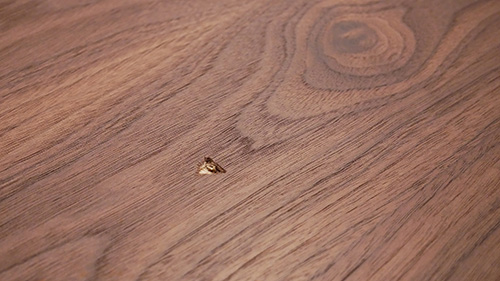
I have refinished over 300 dining room chairs for two hotels. I learned a lot doing them and have done some other simple wood restorative projects. I have run across a very complicated challenge to repair scratch marks on a wood table that were not deep but looked more like indentations. It is the newer products being sold now that are manufactured rather than the old style of wood that is finished. I tried to do something with it but found that it is not like restoring actual wood. Usually these types of manufactured wood furniture are with a satin look and act more like resin. Is there any way to repair these types of damages? Thanks if anyone can steer me in the right direction. – Darlene Betterton
Rob Johnstone: Answering this question is more than a bit tricky because it is not exactly clear what the nature of the indentations are and what the table is made from. Is it a veneer-covered sheet stock of some sort? Does it have a catalyzed finish, oil/resin finish — perhaps it is even a plastic laminate of some sort. I must confess that your description invokes the idea that these tabletops are a cheaply made product with a super-hard catalyzed finish on the surface. It that is true, then the best answer I can give you is don’t waste your time on the effort. The results will be poor and not worth the effort. With that said, if you find a dent or indentation you can always try steaming it to swell the fibers and lift the dent. Put a few drops of water on the dent, put a thin clean rag over the dent, and use a clothes iron to turn the water in to steam. If it does not work the first time, but shows improvement – try it a couple more times. This technique works best on solid wood. If the material is veneer-covered MDF or particleboard, the result will not be good.
Tim Inman: If we could see a picture, it would really help. Otherwise, I feel like a blind man with no hands trying to solve your problem. So many ways, so little time…





